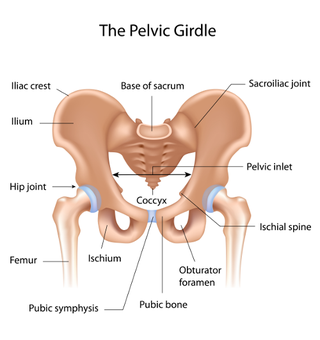Pelvic girdle pain (PGP) is pain which is felt around the pelvic joints, lower back, hips and thighs. Around 1 in 4 pregnant women experience PGP.

It can vary from mild to severe. The symptoms can be different for each person. Although this pain is common, it is not a normal part of pregnancy.
Symptoms of pelvic girdle pain
Symptoms can vary and may be more severe for some people.
You may have pain or discomfort in any or all of the following places:
- over your pelvis, especially at the pubic bone at the front
- along your groin area
- below your tummy
- in your hips
- across one or both sides of your lower back or buttocks (bottom)
Difficulty with movements
You may have difficulty with certain movements, including:
- walking
- putting your weight on one leg at a time, such as climbing stairs, dressing, getting out of the bath
- parting your legs - for example, getting in and out of a car
- hip movements, such as turning in bed
- lying on your back or side
When to get help
Non-urgent advice: Ask your midwife, obstetrician or GP for help if the pain or discomfort:
- interferes with your normal daily life
- does not improve within a week or two
They may refer you to a chartered physiotherapist who specialises in women's health.
Causes of pelvic girdle pain
Pelvic girdle pain can be caused by a combination of factors.
Pregnancy hormones
Pregnancy hormones make your ligaments looser. This can lead to an increased pressure on the pelvic joints to deal with the effects of increased weight gain in pregnancy.
Stress and fatigue
Being overly tired or stressed can affect your nervous system, resulting in a greater sensitivity to pain. This is very common in pregnancy, especially when home and work demands are high.
Growing baby
As your baby grows, this can change your posture and put strain on the pelvis and lower back.
Irritated pelvic girdle joints
Your pelvic girdle joints can become irritated. This happens because of changing muscle activity and increased movement. It can cause pain and discomfort.
History of back pain
If you had back pain before becoming pregnant, this can also cause PGP.
